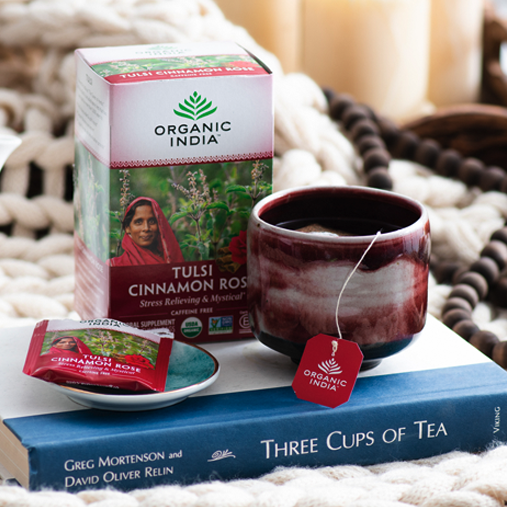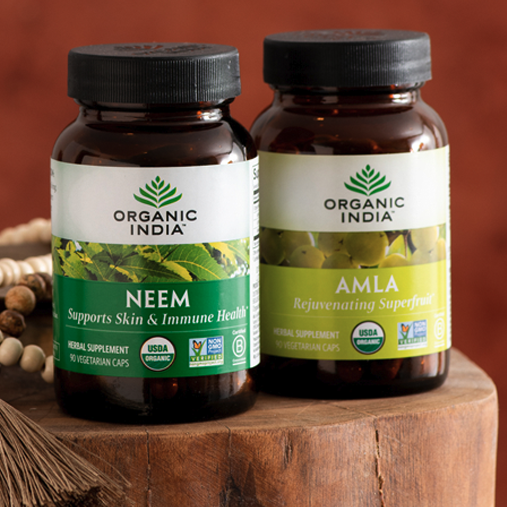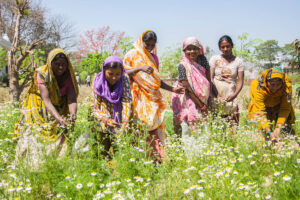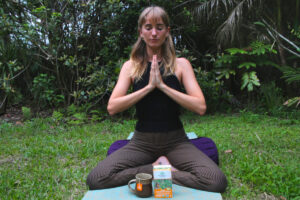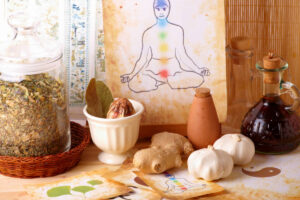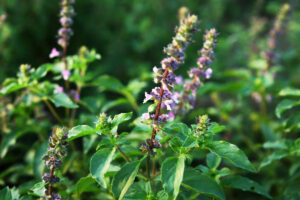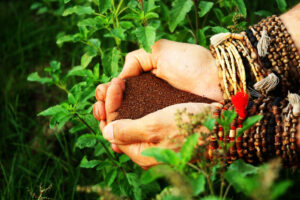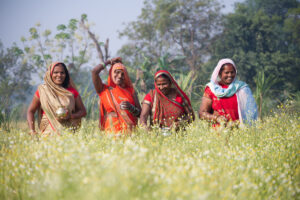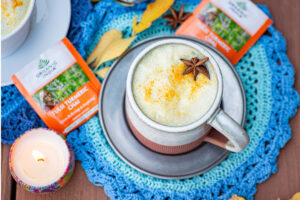Back
According to the ancient Ayurvedic health system, each person’s nature is dominated by one (sometimes two) of three doshas, or universal energies. These energies — named Kapha, Pitta, and Vata — explain your inherent emotional nature, as well as spiritual outlook and physical makeup, and dictate your modes of healing and happiness. As you move from pitta to vata season, it’s important to be aware of the different energies and forces at play in relation to your personal dosha.
It is important to note — as the philosophy can get a little confusing for those first wrapping their minds around it — that not only people have doshas. Doshas exist for objects, nature, phenomena, and even seasons. Everything has characteristics that reflect the three doshas.
Doshas and Vata Season
When seasons change, the body must adjust and adapt to changing light and length of day and temperature. Thus, it’s helpful to know your dosha as well as the dosha of the particular season, so you can choose foods or herbs to support yourself. Each season is correlated with a different dosha. For example, winter and spring are kapha, summer is pitta, and autumn is… you guessed it: vata.
If your own dosha matches that of the season, Ayurvedic wisdom dictates that you might want to be aware of potential physical, mental, and/or spiritual stress. During the fall season, beginning in late September, the human body must undergo a shift, just as nature does. The Vata energy begins to accumulate within the body, bringing cool, erratic, and dry qualities — which is why many experience dryness and feelings of restlessness.
Let’s examine the three doshas and how a person can stay in balance as we move from pitta to vata season, which is Autumn time. This popular time of year is characterized in most places by beautiful foliage, crisp sweater weather and yummy fall treats. To maximize your autumn experience, it’s good to know your dosha and how to stay balanced through the vata season.

What’s Your Dosha?
Because no one can be neatly generalized into any category, it may be difficult to assess which dosha is dominant for you. Often, it’s best to consult an Ayurvedic practitioner for accuracy — especially when it comes to determining any sort of remedy. However, through experimentation and self-reflection, it is possible for an astute person to arrive at a fairly accurate conclusion on his or her own.
As far as Autumn Vata season goes, Dr. Marc Halpern, founder and President of the California College of Ayurveda, wrote that “Ayurveda offers many approaches to bringing vata dosha into balance. Whether the tools used are dietary, herbal, colors, aromas, mantras, massage oils, or lifestyle; the principles used to return to balance are the same. It is necessary to increase the qualities opposed to the imbalance. Where there is an excess of lightness, we increase heaviness; where there is an excess of coldness, we increase heat; where there is an excess of hardness, we increase softness; and so on.”
Kapha
The Kapha-dominant individual is ruled by the water and earth elements, and individuals with this disposition are naturally calm, patient, and compassionate. Their joints are often well-lubricated, and they have strong cognitive function. These people are prone to exhibiting physical and mental characteristics that carry the attributes of moist, cold, heavy, dull, soft, sticky, and static. The Chopra Center explains that the key to balancing Kapha is stimulation….Use warm, stimulating aromas including cloves, camphor, cinnamon, eucalyptus, juniper, and marjoram.”
Ayurveda teaches that Kaphas should eat foods with pungent, bitter, and astringent tastes. Foods with sweet, sour, and salty tastes should be minimalized.
Pitta
Pitta types are elementally fire and water, and are concerned with digestion. The main attributes are hot, sharp or penetrating, light, liquid, spreading, a little oily, and sour. This dosha is responsible for mentally digesting life experiences and biologically digesting food. Pitta is responsible for chemical and metabolic transformations.
According to Ayurvedic practitioner Kathryn Templeton, “Mental digestion, sound judgment, and discernment are functions of balanced Pitta… Regarding transformation, Pitta governs the ability of the body to combust, or digest, the materials needed to bring warmth and color to the body. The body’s ability to maintain warmth and absorb sunlight as well as our ability to mentally digest our thoughts and emotions are governed by Pitta dosha.”
Foods that help balance Pitta are sweet, bitter, and astringent in taste. Ayurveda recommends sweet, sour, salty, pungent, bitter, and astringent tastes for healthy digestion.
Pittas and Kaphas in the Vata season
The Pitta type, according to Ayurveda’s Fall Guide to Pitta Kapha Health, should be mindful of keeping adequately cool (especially in the early fall). And for Kapha types, it’s important not to consume too many heavy, oily foods. Eating autumnal foods, including apples, berries, soaked prunes, soaked raisins, asparagus, cilantro, green beans, leeks, okra, cooked onions, rutabagas, amaranth, quinoa, basmati rice, mung beans, cottage cheese, ghee, goat’s milk, and sunflower seeds, are good for both Pitta and Kapha, .
Ayurveda suggests that supportive herbs for Pitta and Kapha types are Chyavanprash in the morning, to help with immunity, strength, and energy; and Ashwagandha, for supporting mind and nervous system health. Ashwagandha has also been traditionally used for sound sleep, strong digestion, proper elimination, and strength
Vata
The Vata type is related to movement of the mind and body. Like the Vata season, its character is the blowing movement of the wind; and it has to do with blood flow, eliminating waste, breathing, and the movement of thoughts. Vata consists of the elements air and ether, and it is the principal force of motion in the body and mind. A healthy Vata type experiences graceful, unimpeded, and controlled movement. But when out of balance, movements become erratic, excessive, decreased, or blocked. Vata dosha is light, dry, mobile, cold, hard, rough, sharp, subtle, flowing, and clear.
For a Vata individual, regular healthy routines in harmony with the rhythms of nature are considered beneficial; eating and sleeping at the same times every day and eating five small meals, spread out every three hours. This increases both the heavy and stable qualities needed by the Vata type. Recommended foods are those that are somewhat oily (moist), cooked when possible (warm), and moderately spiced (warm). For Vatas to keep their dosha balanced, Ayurveda suggests that they fill it with warmth, oiliness, deep nourishment, loving relationships, and a sense of stability, routine, and groundedness.
Regardless of season or dosa, Ayurvedic adaptogenic herbs support a healthy response to environmental, physical and emotional stressors.
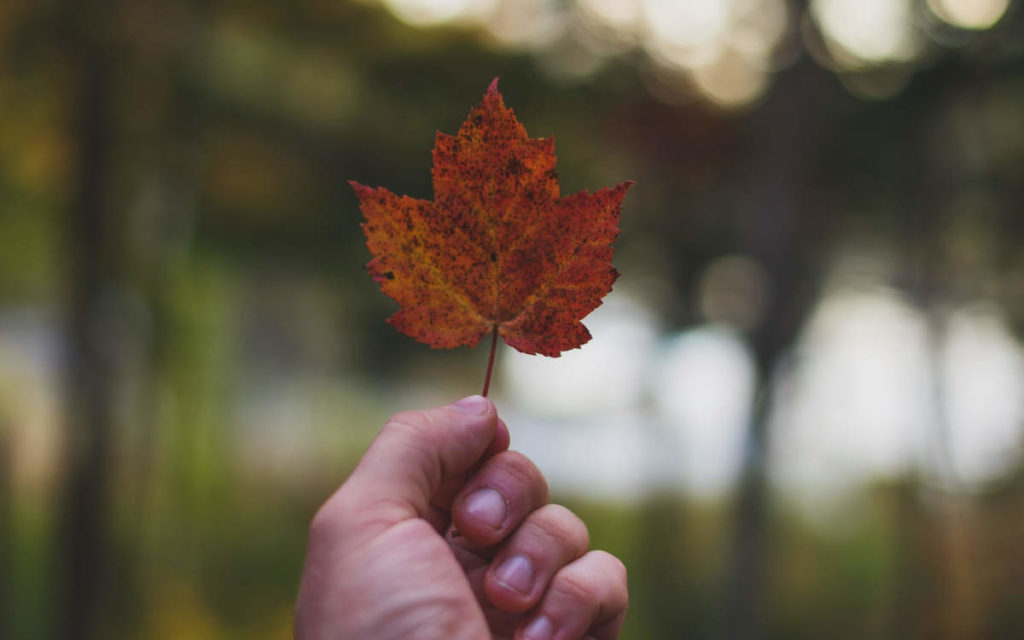
Recommendations for Vata Season
There are ways you can stay aligned and balanced throughout the autumn season via lifestyle shifts and herbal remedies. Here are some recommendations for vata pacifying practices as we move into the cooler months.
Herbs for Vata Season. To keep the vata dosha grounded during autumn, it’s best to choose warming herbs and spices to counteract the cold and dry energies. Try adding ginger, cardamom, cinnamon, cumin, turmeric and black pepper and to your soups, teas and desserts.
Yoga Poses for Vata Season. Since vata energy can be quite bouncy, flighty and enthusiastic, during vata season it is a good idea to do slower yoga practices to balance it out. Try grounding poses like tree pose (vrksasana), mountain pose (tadasana), standing forward bend (uttanasana), garland pose (malasana) and child’s pose (balasana). Always nice to end with legs up the wall for extended relaxation time.
Lifestyle Practices for Vata Season. During vata season, you want to make sure that you are getting quality sleep to fend off any restlessness in the mind or body. This is also a great time to have a clear rhythm and routine to stay on track, and leave time for self care like meditation, self-massage or quality cuddle time if your have a significant other.

The Wisdom of the Dosha System
Ayurvedic sages recognized that the world and all expressions of consciousness are governed by the dosha system, and paying attention to how your body, mind, and spirit react to the environment produces harmony. When the seasons change, so do you — because we live in one singular movement of consciousness. Awareness of this fact informs us to adjust our diets, exercise, meditation, schedules, and states of mind.
Click here to learn more about the benefits of Ayurvedic adaptogen herbs.

